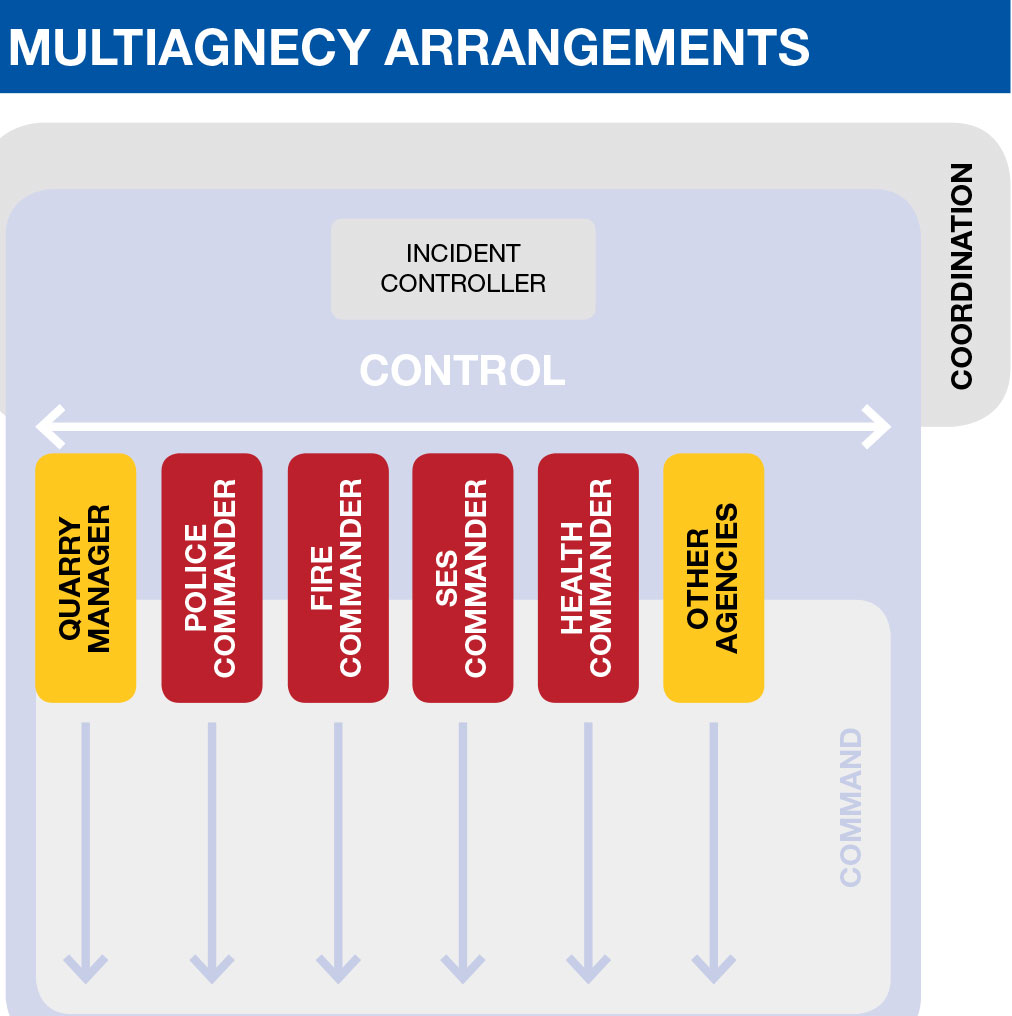Critical Incident Management Workshop
DR ELIZABETH GIBSON, General Manager of the CMPA reports on the Critical Incident Management Workshop.
On 23 May 2017 the CMPA held a workshop on Critical Incident Management. Critical incidents can be a major source of disruption of day-to-day business, can cause significant financial losses, and long term reputational harm. Employees can be traumatised and suffer long term health effects, performance can dramatically decline, and further costs incurred through unplanned absences.
Many organisations that experience critical incidents sufferexcessive adverse impacts, not just arising from the incident itself, but also as a result of their own response to the incident and poor management of collateral issues.
The workshop examined the variety of pitfalls that can occur in the immediate aftermath of a critical incident and in its longer term management. Training in contemporary practices were
provided and a toolkit, tailored to the quarry industry, will be developed by the participants.
To set the scene presentations were given by WorkSafe and Earth Resources Regulation.
WorkSafe Victoria’s Incident Response Program
WorkSafe’s incident response program was presented by Nikos Likouresis, Manager Incident Response Program.
The requirements to report incidents can be found in a number of different Acts: Occupational Health and Safety Act 2004; Dangerous Goods Act 1985 and Equipment (Public Safety) Act 1994.
Notification of Incidents
Needs to be Immediate to WorkSafe on 13 23 60.
Written notification must also be provided to WorkSafe within
48 hours and must be provided in the form approved by the
Authority (www.worksafe.vic.gov.au).
Notifiable incidents (OHS Act part 5 Duties Relating to Incidents refer s. 37 for list).
Expectation of the duty holder/employer (summary)
Action during and post incident:
- Ensure the scene is left undisturbed: this can be done by preventing people from accessing the incident area except in circumstances identified in the OHS Act.
- Ensure access to your site is available and security personnel are aware an inspector will be attending.
- Comply with any directions issued by an inspector/investigator.
- Ensure a management representative is available to assist with their inquiries.
- Notify WorkSafe immediately and then in writing within 48 hours.
Earth Resources Regulation (ERR) Role in Critical Incident Management
ERR’s role in critical incident management was presented by Tony Robinson Director of Regulatory Compliance. The aim of ERR in an Emergency Event is to assist in the stabilisation and control of the incident as its first priority.
Notification of Incidents
All incidents must be notified to the Department in accordance with the relevant Regulations. During business hours, please contact the relevant manager. At all other times, please contact ERR’dedicated incident mobile number 0419 597 010 in the case of:
- An explosion or fire.
- Slope failure or unexpected creep.
- An injury to a member of the public.
- An abnormal inrush of groundwater.
- An ejection of fly rock off-site.
- An escape of a harmful substance.
- A breach of a condition that results in a risk.
- Any incident that may cause concern to the public.
Managing Critical Incidents
Managing critical incidents was presented by the Workshop Leader: Dr Carl Gibson, Director, Executive Impact. Dr Gibson has held senior appointments in international corporates and in Government (including in WorkSafe), where he has had leadership of the response to a number of major crises and disasters of local, national and international significance. He is also the author of over 80 publications, including Australian and International Standards in risk, security, business continuity and emergency management. Dr Gibson has also conducted training in risk and critical incident management in Asia Pacific, Africa, Europe and North America. He has recently led consulting projects for the Commonwealth and Victorian Governments developing resilience frameworks for State and National critical infrastructure.
The workshop was an interactive process which encouraged the active involvement of the participants rather than a lecture session and covered the following:
The nature of critical incidents and recognising a critical incident was discussed. For example
Any serious disruption:
- Accidents
- Serious injury
- Fatality
- Flooding
> Critical infrastructure
> Environmental
> Owned infrastructure - Fire
> Structural
> Wildfire - Infrastructure Loss/Damage
Incident types:
Incident: Non business as usual – distracts from the business at hand.
Emergency: Threatens life, safety, property or environment – requires immediate response.
Critical incident: Dependent on type, size, complexity, speed of onset – it overwhelms, shuts down business as usual, requires external assistance, threatens objectives.
Various case studies were used to illustrate understanding of the effects of volatility, uncertainty and complexity in the aftermath of an accident.
A typical emergency response and the role of police, fire, ambulance and health services. The diagram below illustrates the State’s Critical Incident Management arrangements and the involvement of the Quarry Manager.
Being able to respond to the challenge of a volatile and complex event is vital for prompt recovery of a business. It requires the following level of preparedness:
Planning
> Critical Incident Plan
> Emergency Plan
> Contingency Plans
Capability
> Drills
> Exercise
> Training
> Policies
> Procedures
> Resources
The understanding of public reaction, reputation and escalation was discussed and illustrated with case studies.
Critical Incident Management Checklists and Aide Memoires handout was distributed and will be made available to CMPA Members to comment on together with an Incident Action Plan.
From these two documents a Critical Incident Management Plan template for Quarries will be developed in the coming months.
Thank you to all who helped make the day such a success, especiallythe presenters from ERR, WorkSafe and Executive Impact.











You must be logged in to post a comment Login